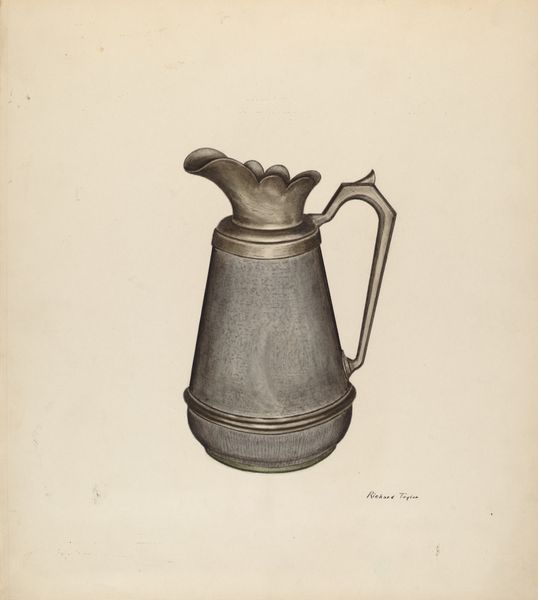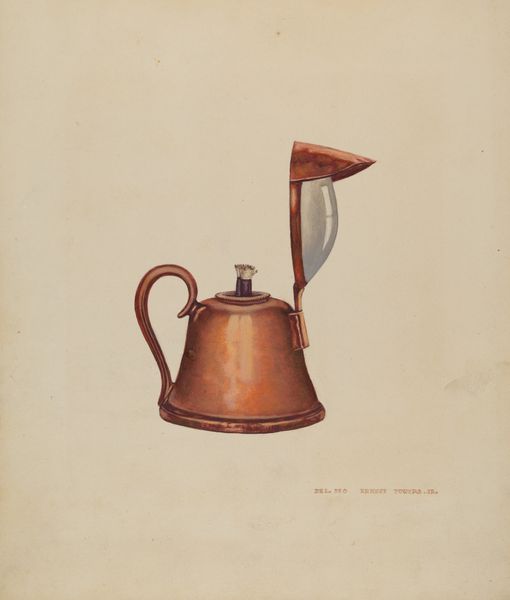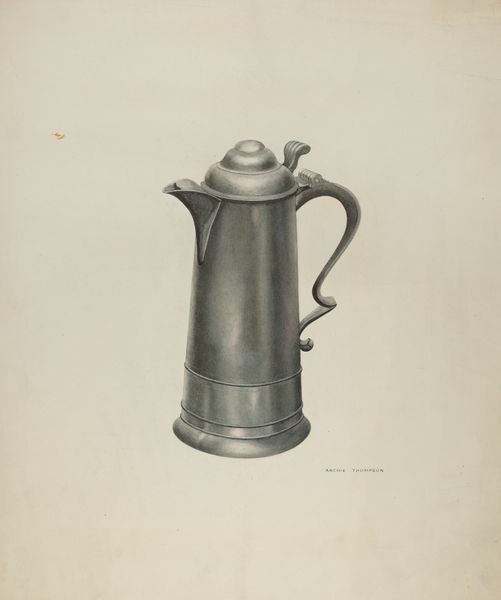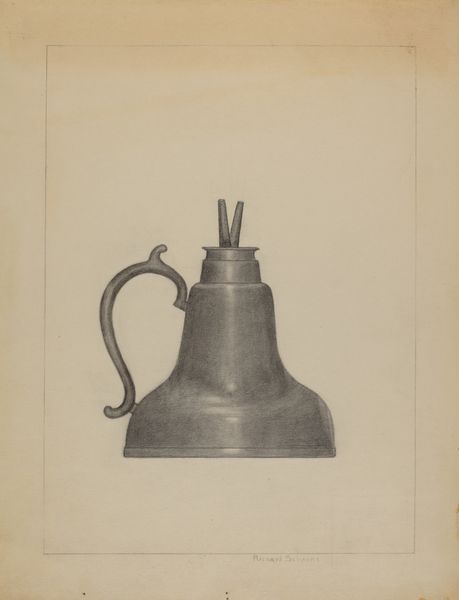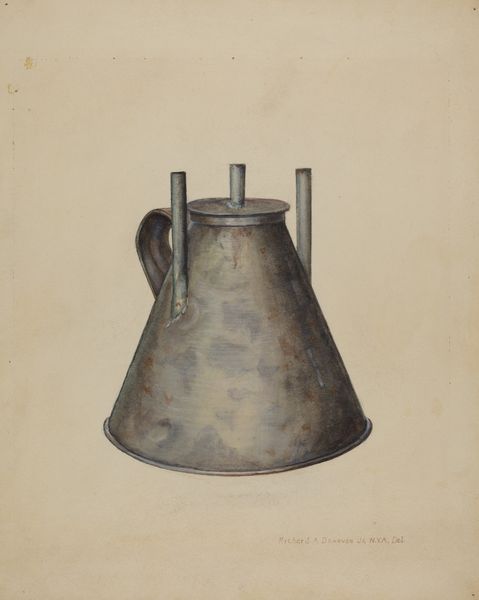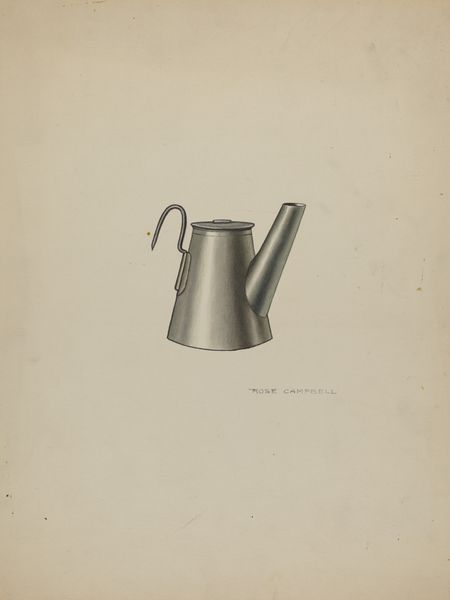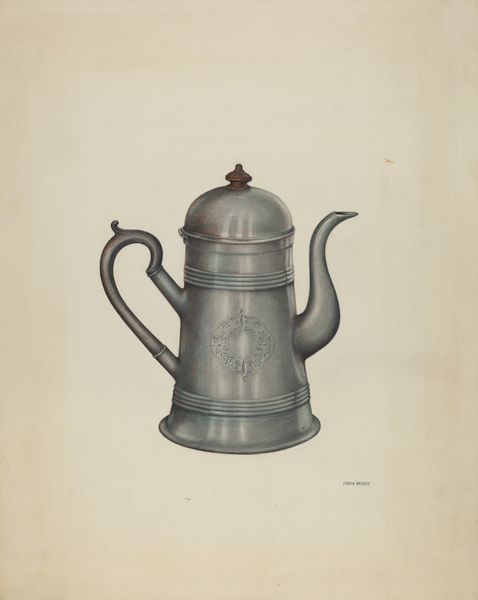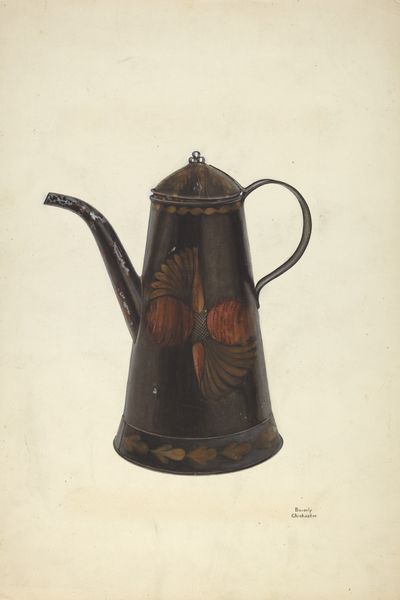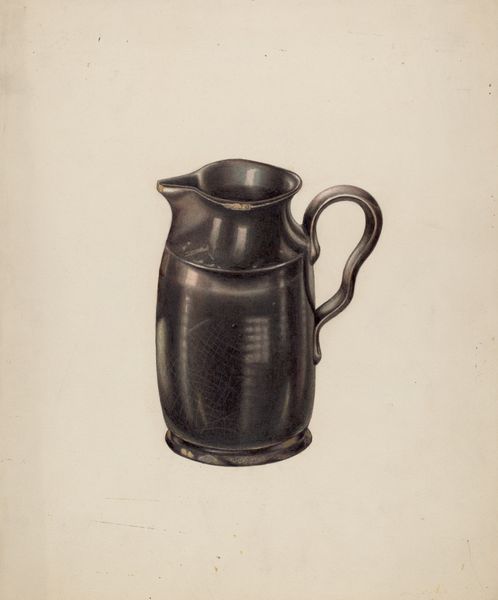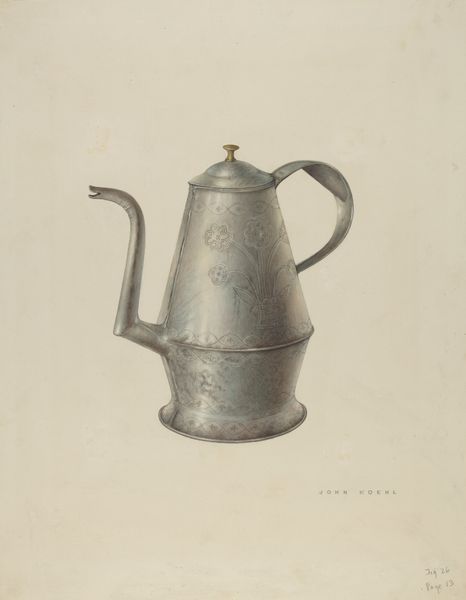
drawing, pencil
#
pencil drawn
#
drawing
#
pencil drawing
#
pencil
#
realism
Dimensions: overall: 28 x 22.9 cm (11 x 9 in.) Original IAD Object: 4 3/4" high; 4 7/8" wide
Copyright: National Gallery of Art: CC0 1.0
Curator: Alfred Goldstein's "Whale Oil Lamp," created around 1940, is a strikingly detailed pencil drawing. The lamp, centered in the composition, is rendered with such care that you can almost feel the coolness of the metal. What's your immediate impression of it? Editor: It's a somber piece, isn't it? The monochromatic palette and realistic depiction feel almost melancholic, like a quiet reflection on a bygone era. You can practically smell the faint, acrid scent of burning whale oil, linking it immediately to industries with deep historical implications, notably on the natural world. Curator: Absolutely. And its somber nature lends itself well to discussions of energy and cultural change. We can see, even in 1940, that our use of this material had faded. The function and cultural meaning of such lamps was drastically changing, no longer central to households or industry. It reminds us to consider the human and ecological costs embedded in material objects, and shifts in technology that alter ways of life. Editor: And let's consider this as an object memorialized in a drawing. It elevates what was once an everyday tool to an object of consideration and potentially even critique. Think of the immense environmental impact of the whaling industry--it speaks volumes, or should. Does the context in which it's exhibited impact how it's interpreted? I suspect, yes. Curator: Undoubtedly. Museums play a critical role in shaping narratives around these objects. This simple rendering encourages a discussion on cultural adaptation, exploitation, and conservation--but only if museums foreground its layered and contradictory legacies. Editor: Precisely. This quiet drawing has the potential to spark some complex thoughts, so long as the museum's framework facilitates, rather than suppresses, them. It challenges the glorification of human advancement narrative, suggesting a need to consider unintended consequences of extraction industries and consumer habits. Curator: A valuable lesson—even in stillness, the artwork whispers volumes about industrial development, the museum's role, and social consciousness. Editor: It truly does.
Comments
No comments
Be the first to comment and join the conversation on the ultimate creative platform.
